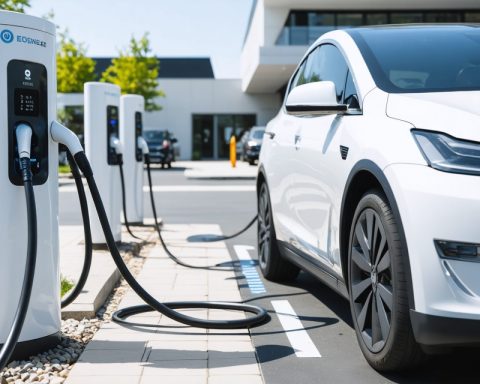Transforming the Future of Battery Recycling
A remarkable shift in the battery recycling industry is anticipated post-2030. A surge of 343% in the volume of light electric vehicle (EV) batteries available for recycling is projected between 2030 and 2035. This forecast marks a significant turning point in sustainable energy practices.
A New Era of Battery Utilization
The forecast indicates that by 2035, the volume of batteries available for reuse will surpass the entire lithium-ion battery market of 2020. This shift heralds a new era where recycled feedstock will play a vital role in meeting battery demand.
The Recycling Revolution
Experts predict that the recycling volume from light EVs will witness substantial growth, with a notable increase in end-of-life batteries being recycled instead of reused. By 2035, it is projected that 79% of end-of-life batteries from light EVs will be recycled, signifying a pivotal moment in sustainable battery practices.
Seizing Opportunities in Recycling
The challenge for recyclers lies in establishing a strong foothold in the market while volumes are still relatively low. By positioning themselves strategically, recyclers can capitalize on the increasing availability of feedstock in the future.
Shaping a Sustainable Future
As the battery market continues to expand across various segments, including rail, long-distance shipping, and aviation, the emphasis on recycling and reuse will be integral to shaping a sustainable future for energy storage.
Advancements in Battery Technology Post-2030
The landscape of battery technology is set to experience further revolution post-2030 as research and development efforts intensify to meet the growing demand for energy storage solutions. One key advancement on the horizon is the development of solid-state batteries, which offer higher energy densities and improved safety compared to traditional lithium-ion batteries. These next-generation batteries have the potential to significantly enhance the performance and lifespan of energy storage systems.
The Role of Artificial Intelligence in Battery Management
An emerging trend in battery technology post-2030 is the integration of artificial intelligence (AI) for battery management and optimization. AI algorithms can analyze battery performance data in real-time, allowing for predictive maintenance, efficient charging strategies, and extended battery lifespan. This innovative approach is poised to transform the way batteries are monitored and maintained in various applications, from electric vehicles to grid storage systems.
Key Questions and Answers
– What impact will advancements in battery technology have on the transportation sector post-2030?
Advancements in battery technology are expected to accelerate the electrification of transportation, leading to increased adoption of electric vehicles across various sectors. This shift towards cleaner and more sustainable transportation options is crucial for reducing greenhouse gas emissions and combating climate change.
– What are the main challenges associated with the widespread adoption of solid-state batteries?
One of the key challenges facing the widespread adoption of solid-state batteries is the cost of production, which is currently higher than traditional lithium-ion batteries. Additionally, scaling up production to meet global demand while maintaining consistent quality and safety standards remains a significant challenge for manufacturers.
Advantages and Disadvantages of Next-Generation Batteries
Advantages:
1. Higher energy density: Next-generation batteries offer higher energy densities, enabling longer driving ranges for electric vehicles and increased energy storage capacity for grid applications.
2. Improved safety: Solid-state batteries, in particular, have enhanced safety features, reducing the risk of thermal runaway and fire incidents.
3. Sustainable materials: Many next-generation batteries are designed with sustainable and non-toxic materials, leading to a lower environmental impact compared to traditional battery chemistries.
Disadvantages:
1. Cost: The production cost of next-generation batteries, such as solid-state batteries, is currently higher than conventional lithium-ion batteries, limiting their widespread adoption.
2. Manufacturing challenges: Scaling up production of next-generation batteries poses manufacturing challenges due to the complex processes involved in producing these advanced battery technologies.
3. Performance optimization: Further research is needed to optimize the performance and longevity of next-generation batteries to ensure they meet the rigorous demands of various applications.
For more information on the latest developments in battery technology post-2030, visit Battery Power Online. This domain serves as a valuable resource for staying updated on the advancements and innovations shaping the future of energy storage solutions.








